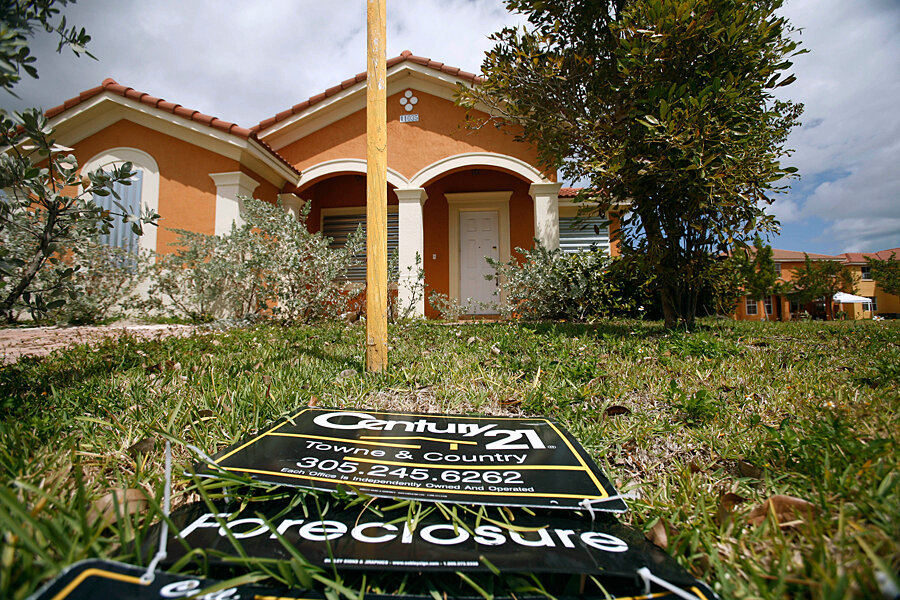Home foreclosures jump. Wait, haven't we already seen this show?
Loading...
| Washington
The pace of home foreclosures spiked upward in January, a sign that troubles in America's housing market persist despite gains in the overall economy.
Don’t get too worried, though. Yes, foreclosures jumped 8 percent compared with December, according to the firm RealtyTrac. But this isn’t some new big danger rising in the housing market. Rather it’s an old problem that’s ebbing and flowing as it gradually diminishes.
“The monthly increase in January foreclosure activity was somewhat expected after a holiday lull,” said Daren Blomquist, vice president at RealtyTrac, in releasing the numbers. Some areas including California saw larger spikes, which he interprets as a sign that “many states are not completely out of the woods when it comes to cleaning up the wreckage of the housing bust.”
In many cases, states posting a sizable rise in foreclosures are so-called “judicial states,” where court reviews make it harder for lenders to foreclose on borrowers. That can help guard against wrongful foreclosures, but it has prolonged the process of working through the tide of borrower delinquencies.
On a nationwide basis, the broad trend is positive. Although foreclosures rose in January compared with the prior month, they were down 18 percent from their level a year earlier. When measured on that year-over-year basis, foreclosures have been declining for 40 straight months now, says RealtyTrac, based in Irvine, Calif.
That doesn’t mean Americans are having an easy time when it comes to housing. Millions of owners are still “under water,” carrying loans that are larger than the market value of their homes. Many buyers are having a hard time obtaining credit, and home prices remain high (although they've fallen from their peak levels). And in a first-time-on-record development, fully half of renters are paying more than 30 percent of their incomes for apartments, according to a report by the Harvard Joint Center for Housing Studies.
Yet conditions are encouraging by many measures.
Interest rates on mortgages remain low: 4.3 percent is the average 30-year fixed rate, according to the latest Freddie Mac survey. The labor market has been improving, which bodes well not just for jobs but also for possible pay raises in 2014. Some housing economists foresee a better balance of buyers and sellers in the market this year.
“Buyers entering the market in the next few months will not be competing with cash-rich investors like they were last year,” predicts economist Stan Humphries in a new report from Zillow.com, which surveyed market experts to draw that conclusion.
“Real estate investors, both large and small, played a crucial role in helping to stabilize markets during the darkest days of the housing recession, but a decline in investor activity now isn’t necessarily a bad thing,” Mr. Humphries says.
Mortgage rates could rise, but the negative effect on buyers should be offset by other factors, such as rising personal income, some economists say.
Signs of distress in the market have been easing as the economy has improved. Today some 6.5 percent of mortgage borrowers are delinquent, defined as 90 days or more past due on their payments. That’s down from a peak of 10.6 percent of mortgages in January 2010, according to data reported by Black Knight Financial Services.
But past-due loans still aren’t down to pre-recession levels, such as the 4.3 percent delinquency rate seen in late 2005. That explains why foreclosures, too, are still above pre-recession levels.






